
|
THE WEB FRESHFORD SITE |
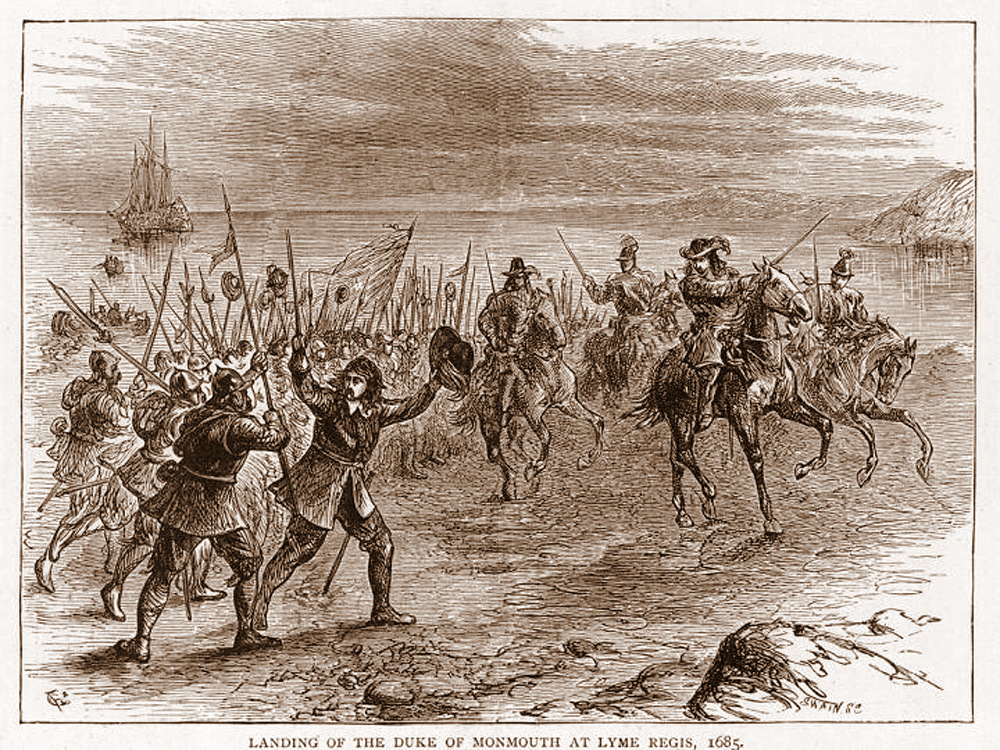
Charmouth as a whole welcomed the return of the Duke of Monmouth, the illegitimate eldest son of Charles II and his mistress Lucy Walters. He unsuccessfully attempted to depose his uncle, King James II, in what is commonly called the Monmouth Rebellion. After declaring himself the legitimate king and gaining support from the Protestants opposed to James's Roman Catholic rule, Monmouth set sail from Holland and landed in Dorset in May 1685. The Duke had 3 ships with which to invade and chose Lyme Regis as it was near to Taunton where he believed he had great support. The night prior a number of his followers under the leadership of Thomas Dare of Taunton landed on the beach at at Seatown, near Charmouth.Their mission was to seek support in the surrounding villages. No doubt Charmouth was amongst them; with later records showing at least 16 joined him, out of a population of no more than 250 . The villagers would have seen the boats pass their shores and well before 10 a.m. on the 11th June the Helderenberg, the Pink and the Dogger were off Lyme. Near the shore they encountered a boat with 3 fishermen, who were detained aboard the Dukes ship. It was Samuel Robbins from Charmouth who would go down in history by selling his catch to the rebels. The records show him later 'taken at Lyme Regis and sent to Dorchester gaol' where he was tried and hanged at Wareham, even though he was not a supporter. A contemporary report brings this sad tale to life as follows: "One Samuel Robbins of Charmouth who was executed, or rather murdered at Wareham. I cannot pass him by in silence, his case being so extraordinary hard, that to speak moderately between the King and his case, I do say this, that I verily believe never Man suffered innocently, as I hope you will be satisfied in,matter you have heard his Crime.
He used generally in the summer to use the Craft of Fishing to get a competent maintenance for his Family, and happened to be out at sea a fishing before Lyme, that day the Duke came in to land, and was commanded on board of one of the Duke's Ships, he not knowing who they were, and they bought his fish of him, after which they told him that was the Duke of Monmouth, pointing at him, and he was just going to land. He desired to go on shore, which was refused and told, that as soon as the Duke was landed he should have his liberty. So accordingly he came on shore, and never was with him, or even take Arms under him. I leave the Reader to judge whether this was High Treason or no. This was all he was guilty of except that he was a good honest man, a Zealous Christian, a man of very good life and conversation, as I think his neighbours will attest it, in most Towns and Parishes near where he lived, but he had a good book in his house when taken called : the Solemn league and Covenant. This was the High Treason he must be guilty of,which was aggravated by The Lord Chief Justice, by one or two Spirits his neighbours. But to be short , he received his Sentence of Death with great courage, and not at all dismayed, saying very often in prison before "if it pleased god to call him now to Death, he should be ready, but said he I am as Innocent of any thing I have done against any Man that may deserve this Punishment, as the child now unborn". When he came to the Place of Execution, he very cheerfully declared his innocence to the Spectators, as before, and so Praying very devoutly for some time, he was Executed".
Another Charmouth man , William Guppy also met an unfortunate end. He was tried at Dorchester by the notorious Judge Jeffries and transported from Weymouth on the way to Barbados, but tragically died on board the Betty on December 17th 1685. His house on the Old Lyme Hill was for many centuries referred to as Guppy's Tenement as a memorial to this poor soul . He was amongst 16 villagers suspected as rebels. The full list is shown below:
Birdle John, of Charmouth, suspected
Buffet, Thomas, of Charmouth, suspected
Burrough(Burrow) Joseph of Charmouth, suspected
Follett, George of Charmouth, suspected
Guppy, William of Charmouth, “ supposed ” , tried at Dorchester and transported for Nipho from Weymouth, November 25, on the "Betty" towards Barbados, died at sea on December 17 th 1685.
Holman Thomas , of Charmouth, suspected
Parsons, John, of Charmouth, suspected
PARSONS, Thomas senior, of Charmouth, 'suspected' .
PARSONS, Thomas junior , of Charmouth, 'suspected'. One of these two was tried at Dorchester and transported for Booth on the "Happy Return" from Weymouth, Sept. 25, to Barbados; sold to Capt. John Parnell.
PARSONS, William , husbandman, of Charmouth, 'suspected' [See John Parsons of Charmouth.] William was tried at Exeter and Hanged in October at Ottery St Mary. Land at Shute, co. Devon forfeit and for sale.
ROBBINS, Samuel, of Charmouth, 'taken at Lyme Regis and sent to Dorchester gaol' , July 14; tried at Dorchester Sept. 10; hanged at Wareham Sept. 22 . He sold fish to Monmouth at sea and so landed with him.
Sampson, John of Charmouth, suspected, John Sansome of Hawkchurch “ seen in Monmouth's camp ” by Weston Hillary.
Shave, William of Charmouth, suspected.
Tallis, Nicholas of Charmouth, suspected.
Webber, Richard of Charmouth, suspected
Young, Robert, suspected
There is one other reminder of Charmouths involvement in the Rebellion, it is a Memorial to Edward Coker at St. Mary`s Church at Bridport. It reads: "In memory of Edward Coker of Maypowder ( Mapperton) Slayne at The Bull Inn in Bridport June 14th 1685 by one Venner, who was an officer under the late Duke of Monmouth in that Rebellion ".It is a record of the Rebels attach on the town by a party of 400 foot and forty horse which left Lyme Regis on the Saturday after the landing . The following day they were routed, and in the afternoon came back helter skelter to Lyme. They left and returned by the lane to Charmouth along the bottom of the cliffs. There is a print dated 1814 by William Daniel that shows the path which has long sinc e disappeared although a section still survives in Church Lane.
The Duke of Monmouth was defeated at the Battle of Sedgemoor some 6 weeks after landing at Lyme, fleeing from the battlefield, only to be captured and executed on 15 July on Tower Hill. Unlike his father King Charles II he was not able to escape back to the continent. It was to be only 3 years in 1688, that the unpopular Catholic King James II was deposed by William of Orange.

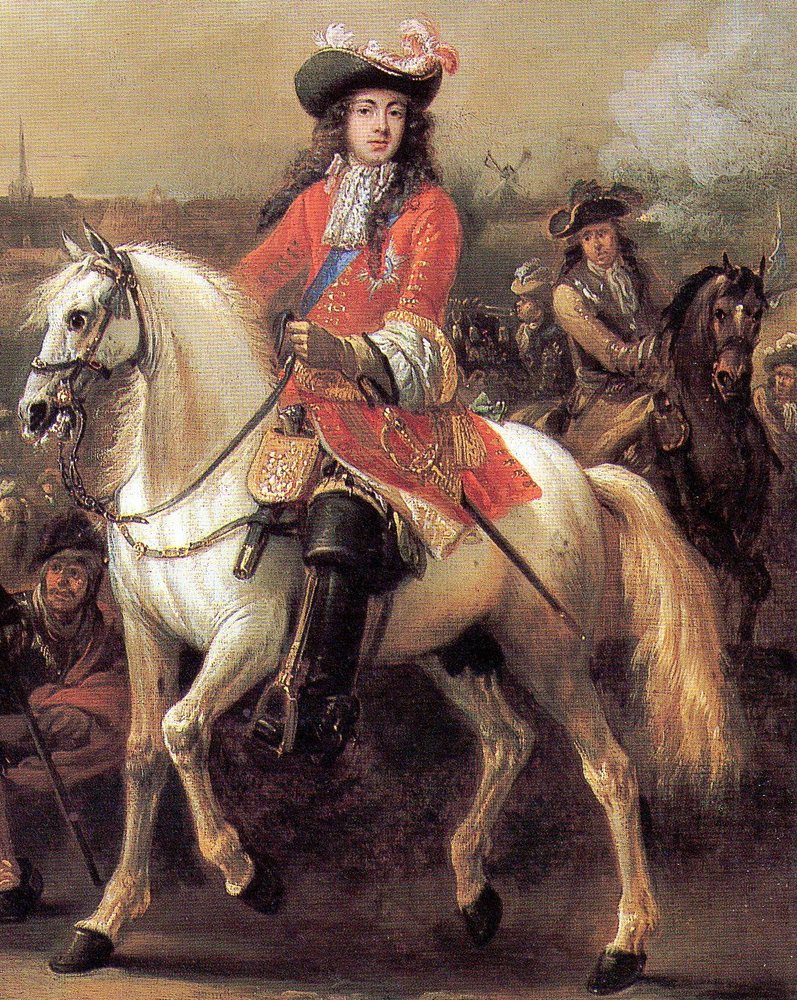
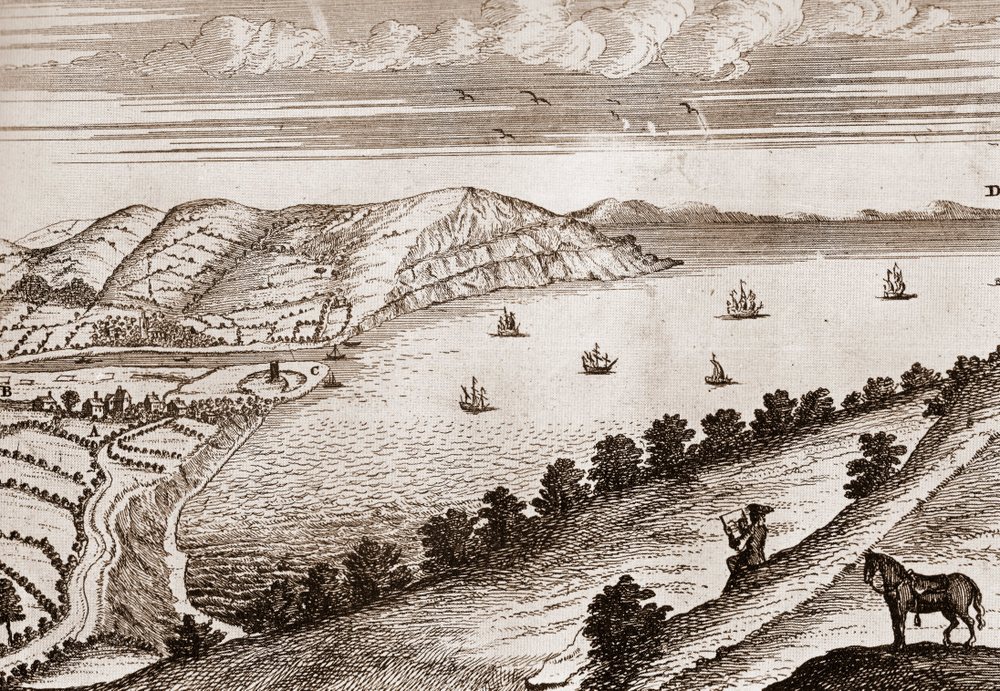
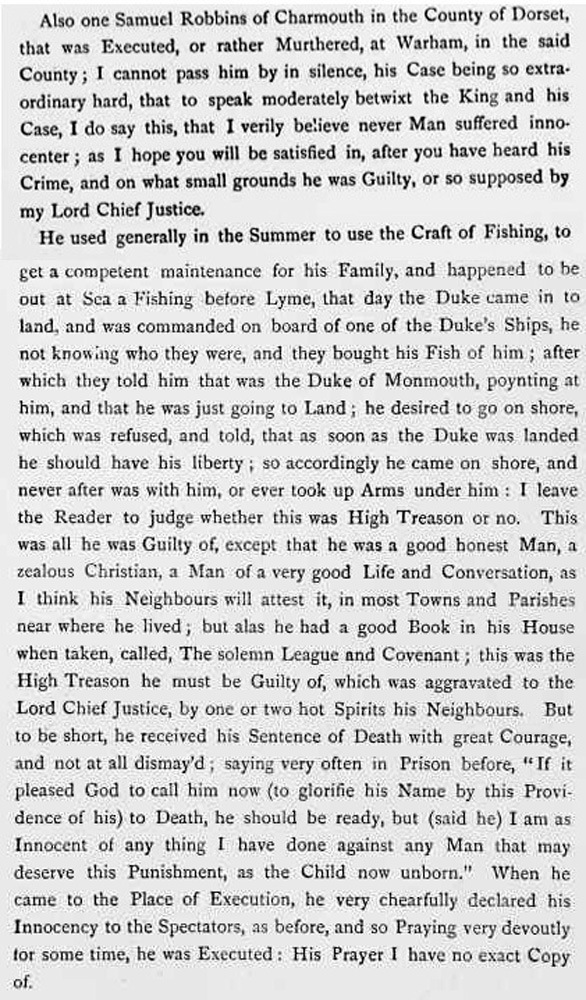
"The Western Martyrology or Bloody Assizes" by John Tutchin
This book contains "The Last Speech of Doctor Temple, Chief Physician to the Duke of Monmouth" who came over with him from Holland, which refers to The sad story of Samuel Robbins of Charmouth which can be found on page 225 as follows:
"Also one Samuel Robbins of Charmouth in the County of Dorset, that was executed, or rather murthered, at Warham, in the said County : I cannot pass him by in Silence, his Case being so extraordinary hard, that to speak moderately betwixt the King and his Case, I do say this, that I verily believe never Man suffered innocenter ; as I hope you will be satisfied in, after you have heard his Crime, and on what small Grounds he was found guilty, or so supposed, by my Lord Chief Justice.
He used generally in the Summer to use the Craft of Fishing, to get a competent Maintenance for his Family, and happened to be out at Sea a-fishing before Lyme that Day the Duke came in to land ; and was commanded on Board one of the Duke's Ships, he not knowing who they were, and they bought his Fish of him ; after which they told him that was the Duke of Mon- mouth, pointing at him, and that he was just going to Land : He desired to go on Shoar, which was refused, and told, that as soon as the Duke was landed he should have his Liberty ; so ac- cordingly he came on Shoar, and was never after with him, or ever took up Arms under him : I leave the Reader to judge whether this was High-Treason or no.. This was all he was guilty of, except that he was a good honest Man, a zealous Christian, a Man of a very good Life and Conversation, as I think his Neighbours will attest it, in most Towns and Parishes where he lived : But alas he had a good Book in his House when taken, calTd, The solemn League and Covenant; this was the High-Treason he must be guilty of, which was aggravated to the Lord Chief Justice, by one or two hot Spirits his Neighbours. But to be short, he received Sentence of Death with great Courage, and not at all dismayed, saying very often in Prison before, Lf it pleased God to call him now {to glorifie his Name by this Pro- vidence of his) to Death, he should be ready; but (said he) / am as Lnnocent of any thing 1 have done against any Man that may deserve this Punishment as the Child now unborn. When he came to the Place of Execution, he very chearfully declared his Innocency to the Spectators, as before, and so praying very devoutly for some Time, he was executed : His Prayer I have no exact Copy of."
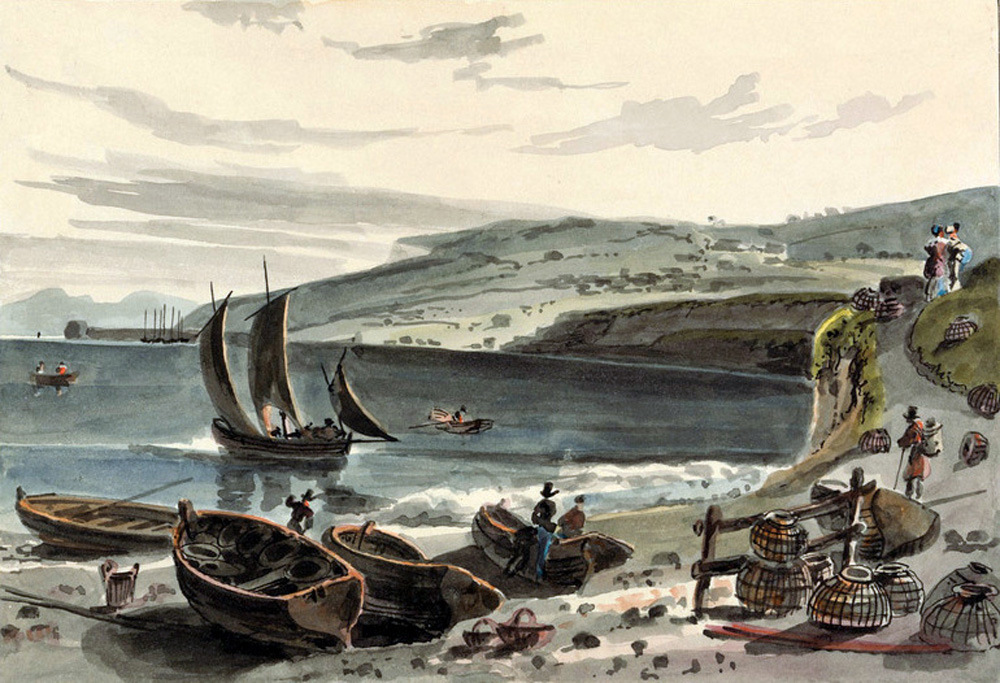
An artists impression of the exitement in Lyme Regis when The Duke of Monmouth landed on its shore.
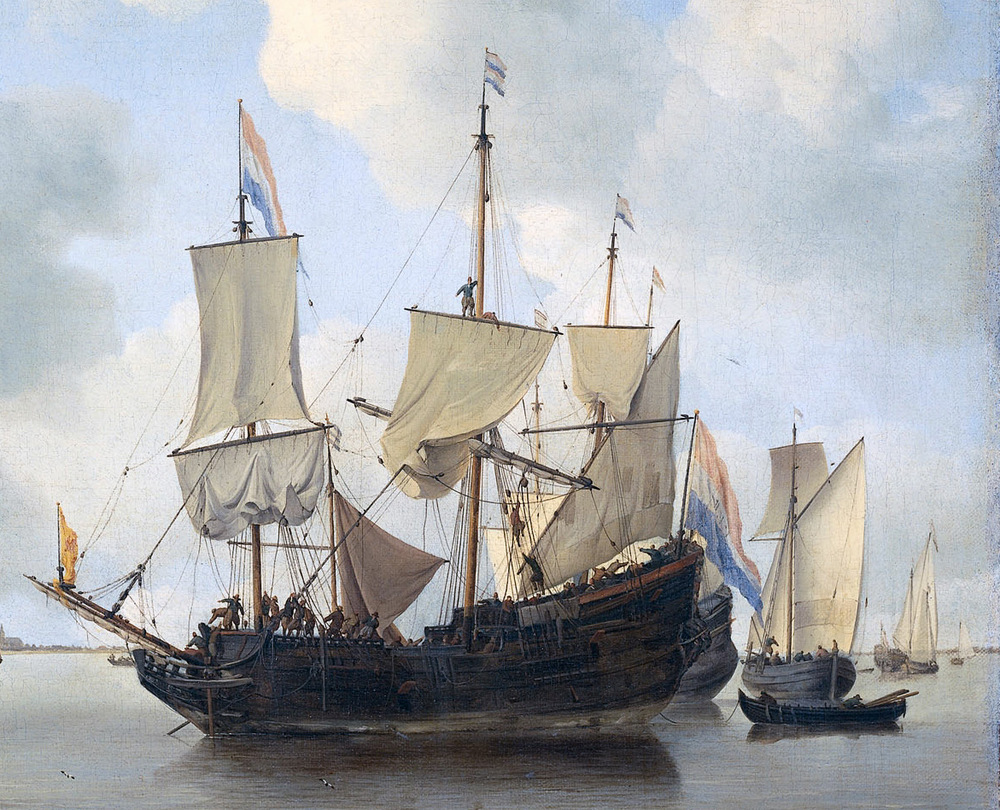
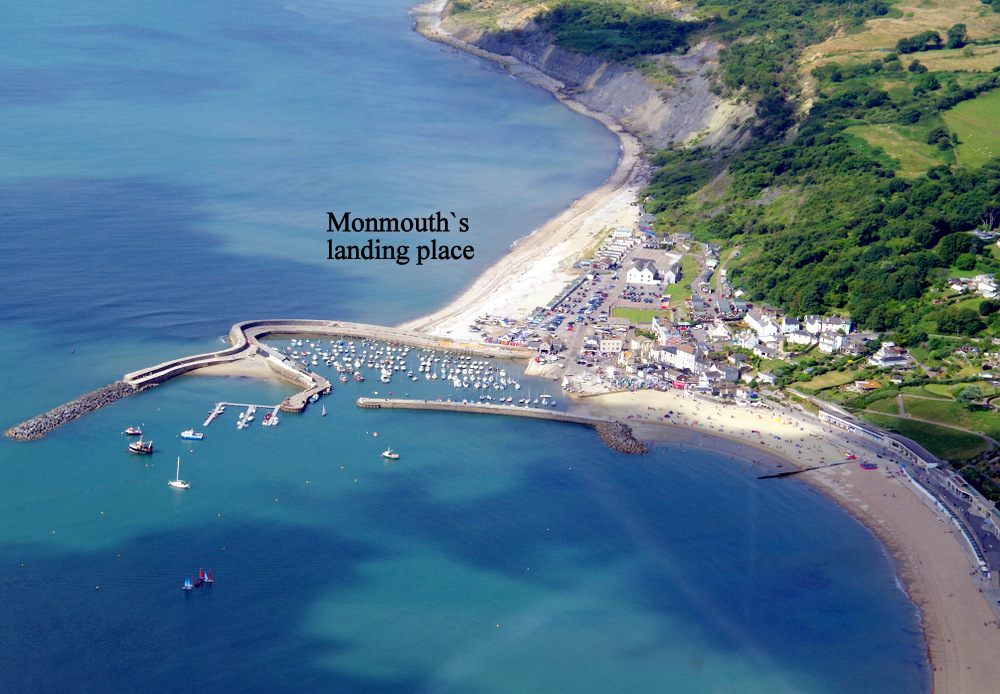
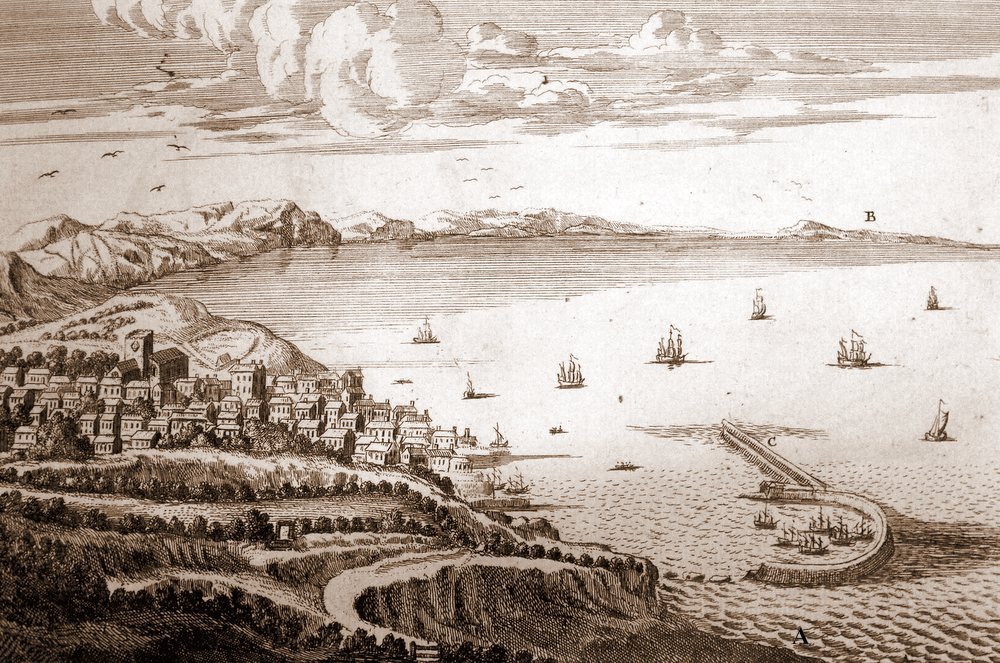
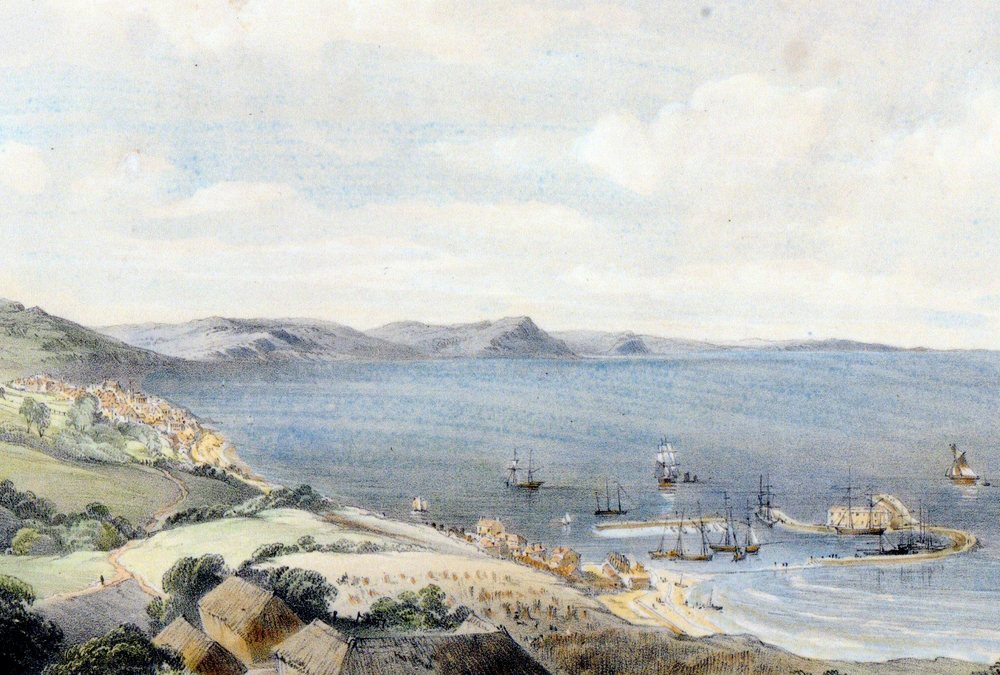


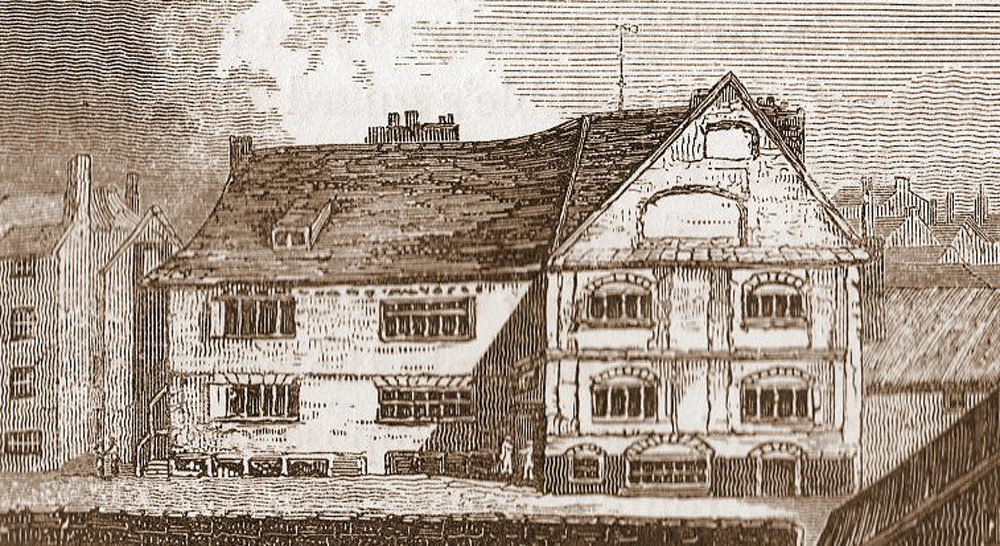
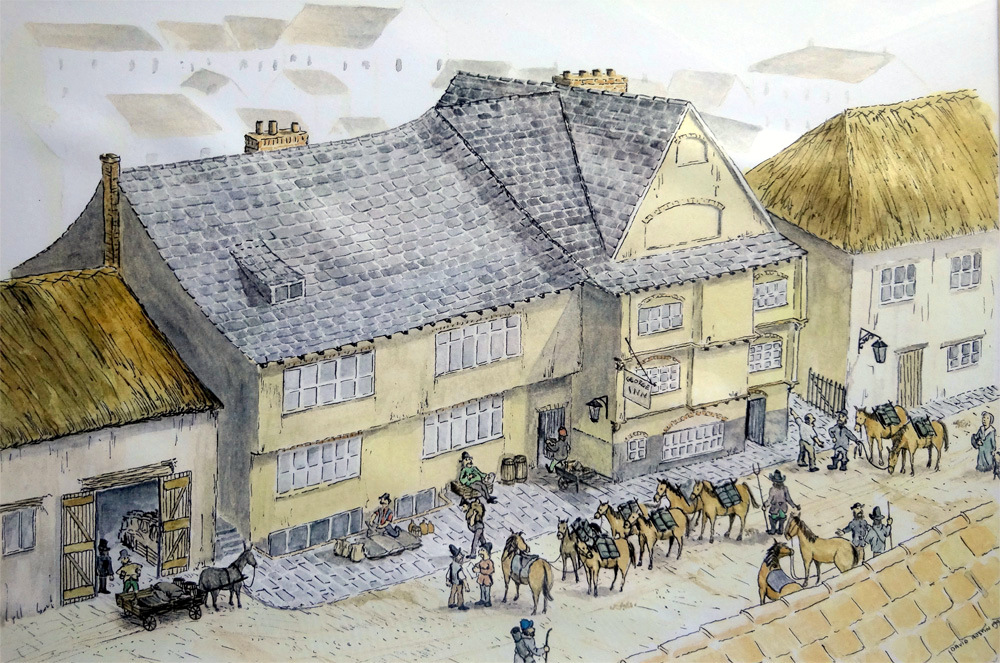
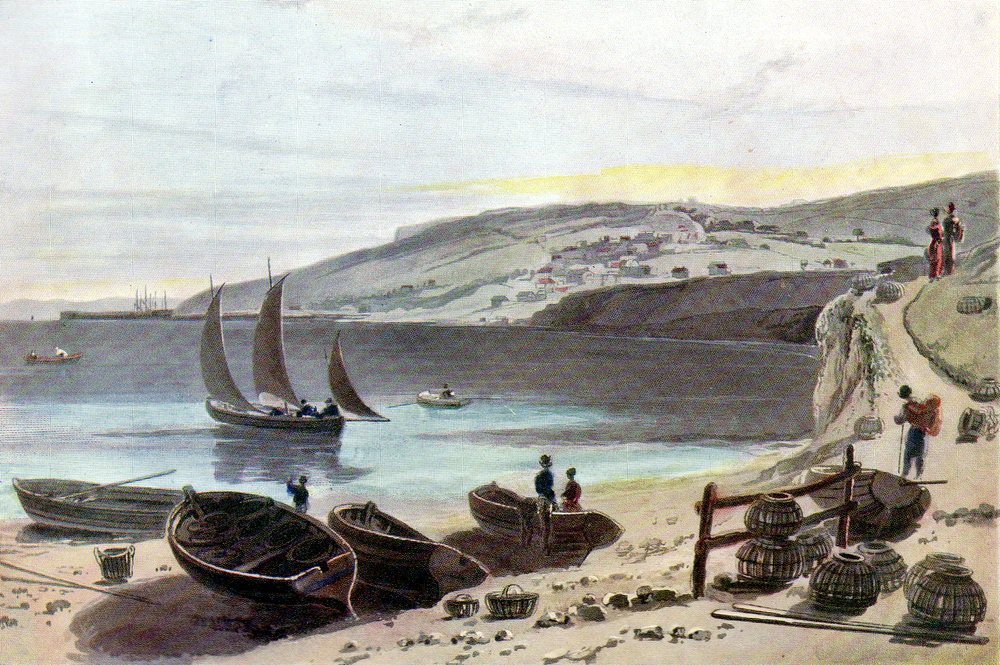


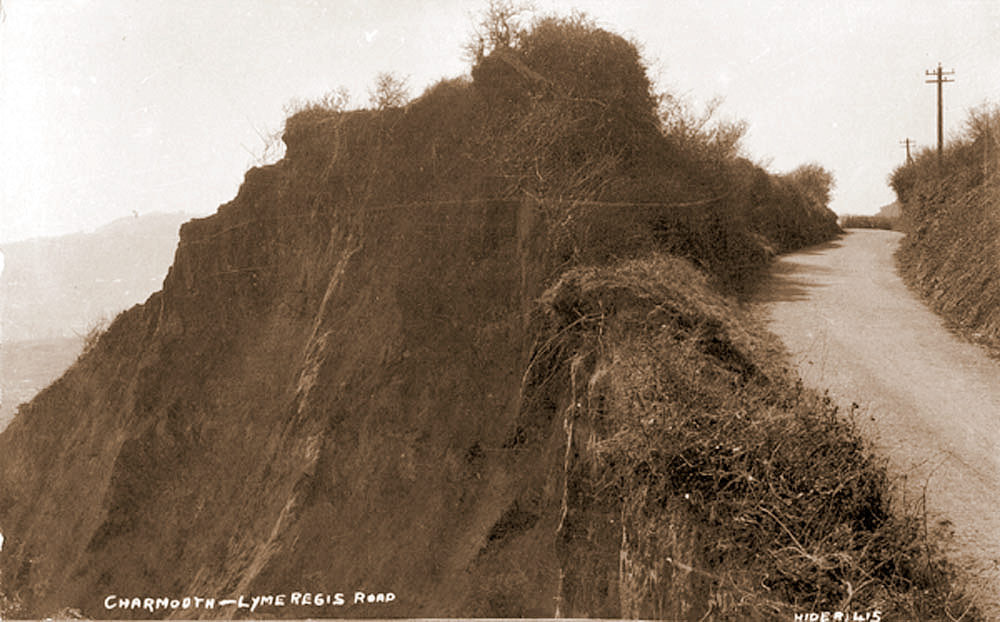
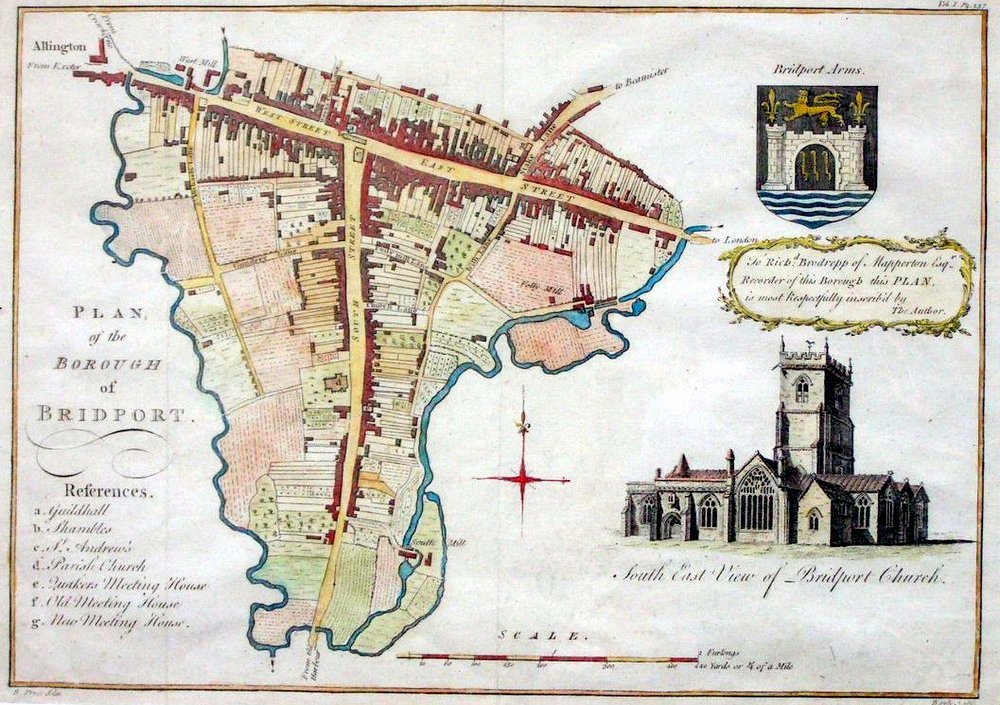
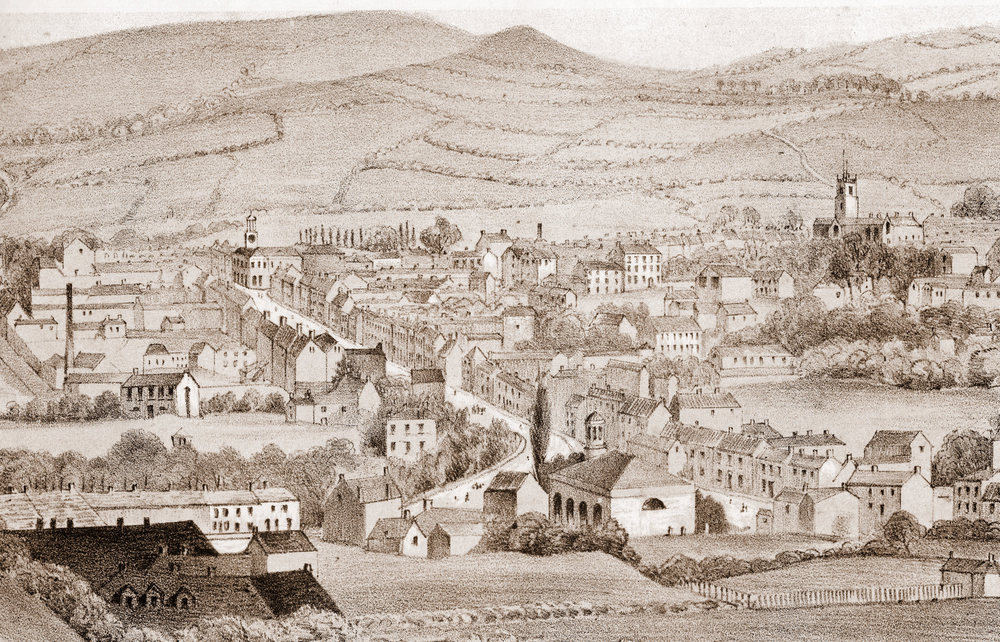
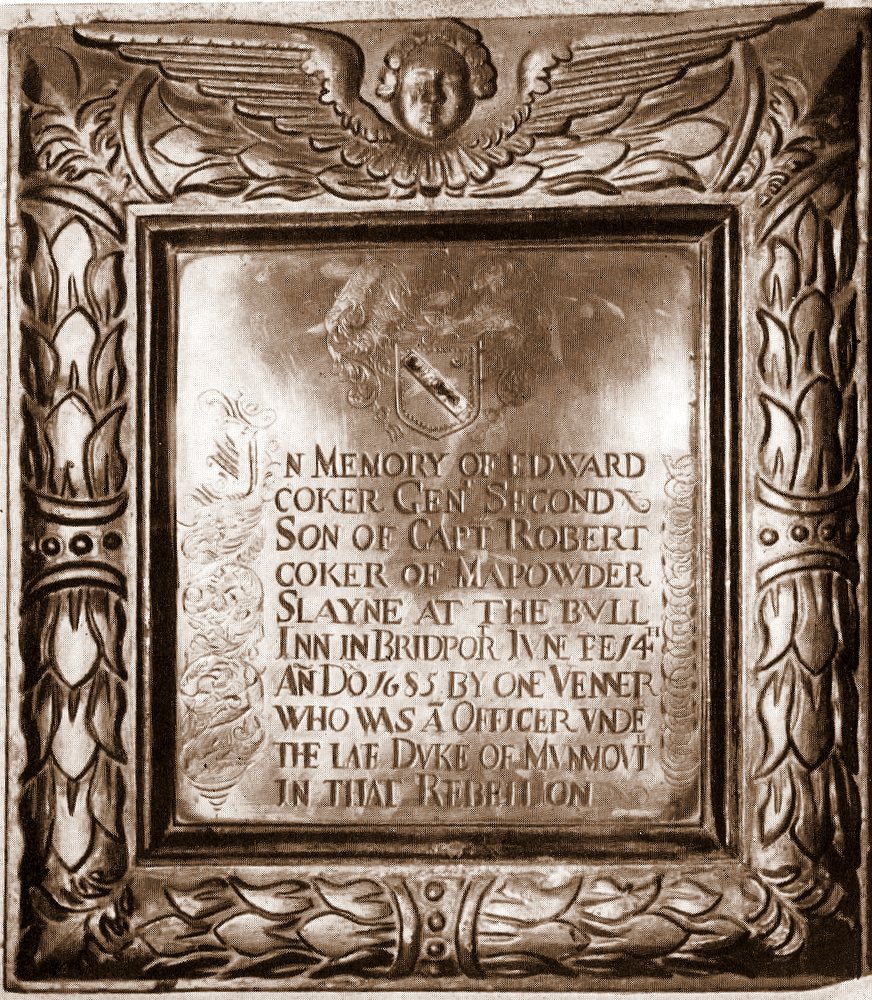
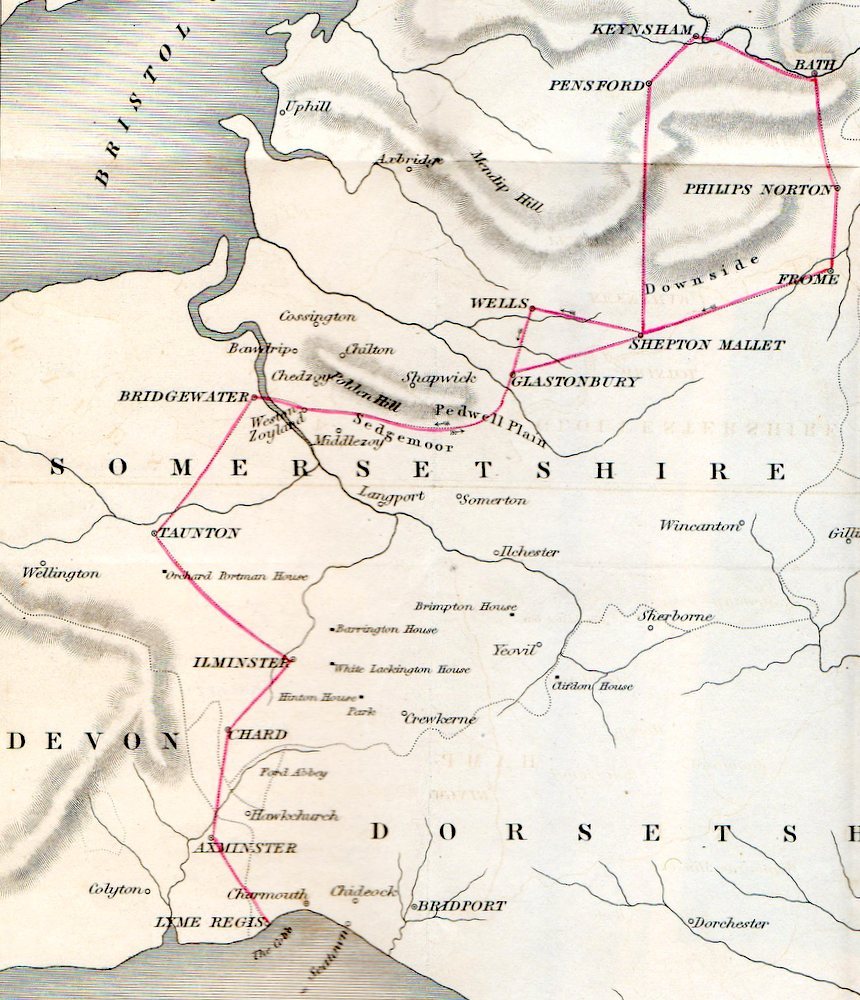

Judge Jeffries
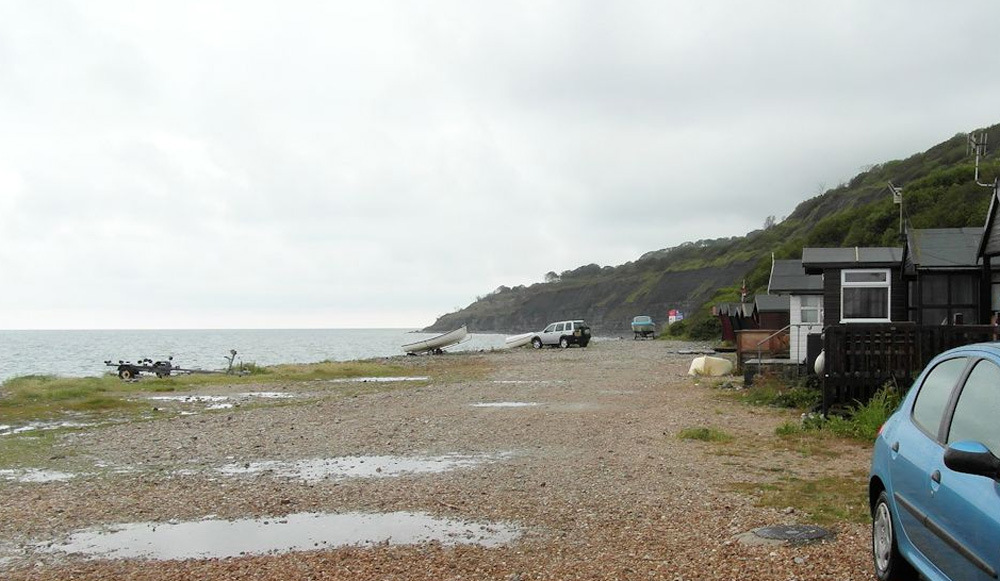
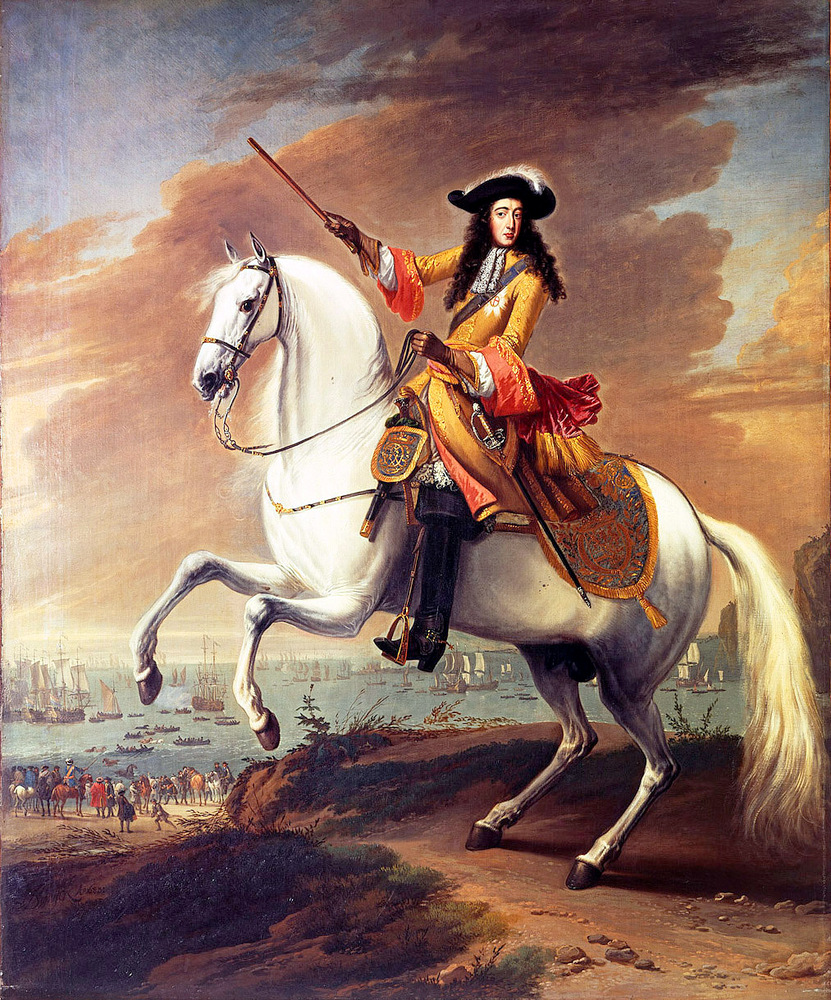
James Scott (Duke of Monmouth) was the illegitimate son of Charles II and his mistress Lucy Walters. He unsuccessfully attempted to depose his uncle, King James II, in what is commonly called the Monmouth Rebellion. After declaring himself the legitimate king and gaining support from the Protestants opposed to James's Roman Catholic rule, Monmouth set sail from Holland and landed in Dorset in May 1685, gathering his supporters at Lyme Regis.
The Duke had 3 ships with which to invade and chose Lyme Regis as it was near to Taunton where he believed he had great support. The night prior a number of his followers under the leadership of Thomas Dare of Taunton landed on the beach at at Seatown, near Charmouth.Their mission was to seek support in the surrounding villages. No doubt Charmouth was amongst them; with later records showing at least 16 joined him, out of a population of no more than 300. The villagers would have seen the boats pass their shores and well before 10 a.m. on the 11th June the Helderenberg, the pink and the dogger were off Lyme. Near the shore they encountered a boat with 3 fishermen, who were detained aboard the Dukes ship. It was Samuel Robbins from Charmouth who would go down in history by selling his catch to the rebels. The records show him later 'taken at Lyme Regis and sent to Dorchester gaol' where he was tried at Dorchester on September 10 and hanged at Wareham on September 22. This is a tragic story as he was not a supporter and just happened to be in the wrong place at the wrong time and for that reason would go on lose his life at the hands of the vengeful Judge Jeffries at the "Bloody Assizes".
Another Charmouth man, William Guppy also met an unfortunate end. He was tried at Dorchester by the notorious Judge Jeffries and transported from Weymouth on the way to Barbados, but tragically died on board the "Betty" on December 17th 1685. His surname continued to be used as a description of his property and appears amongst the list of the Lords of the Manor lands. The site of his former home at the bottom of Old Lyme Hill. was known as Guppy`s Tenement until recently and now has two houses built on it.
There is another Charmouth connection when Monmouth's party of four hundred foot and forty horse which left Lyme Regis on the Saturday for the attack on Bridport. The following day they were routed, and in the afternoon came back helter skelter to Lyme. They left and returned by the lane to Charmouth along the bottom of the cliffs. There is a print dated 1814 by William Daniel that shows the long since disappeared path, although it starts in Church Lane but has long since fallen into the sea.
The Duke of Monmouth was defeated at the Battle of Sedgemoor some 6 weeks after landing at Lyme, fleeing from the battlefield, only to be captured and executed on 15 July on Tower Hill. Unlike his father King Charles II he was not able to escape back to the continent. It was to be only 3 years in 1688, that the unpopular Catholic King James II was deposed by William of Orange.
List of Rebels from Charmouth
Birdle John, of Charmouth, suspected
Buffet, Thomas, of Charmouth, suspected
Burrough(Burrow) Joseph of Charmouth, suspected
Follett, George of Charmouth, suspected
Guppy, William of Charmouth, “supposed”, tried at Dorchester and transported for Nipho from Weymouth, November 25, on the "Betty" towards Barbados, died at sea on December 17 th 1685.
Holman Thomas , of Charmouth, suspected
Parsons, John, of Charmouth, suspected
PARSONS, Thomas senior, of Charmouth, 'suspected' .
PARSONS, Thomas junior , of Charmouth, 'suspected'. One of these two was tried at Dorchester and transported for Booth on the "Happy Return" from Weymouth, Sept. 25, to Barbados; sold to Capt. John Parnell.
PARSONS, William , husbandman, of Charmouth, 'suspected' [See John Parsons of Charmouth.] William was tried at Exeter and Hanged in October at Ottery St Mary. Land at Shute, co. Devon forfeit and for sale.
ROBBINS, Samuel, of Charmouth, 'taken at Lyme Regis and sent to Dorchester gaol' , July 14; tried at Dorchester Sept. 10; hanged at Wareham Sept. 22 . He sold fish to Monmouth at sea and so landed with him.
Sampson, John of Charmouth, suspected, John Sansome of Hawkchurch “ seen in Monmouth's camp” by Weston Hillary.
Shave, William of Charmouth, suspected.
Tallis, Nicholas of Charmouth, suspected.
Webber, Richard of Charmouth, suspected
Young, Robert of Charmouth, suspected
Most of this information comes from the Constables Presentments of 2611 names intended for the Assizes at Dorchester, Exeter and Taunton ( also called the Monmouth Roll).
For further reading consult the Monmouth Rebels 1685 compiled by W. Macdonald Wigfield, M.A. published by the Somerset record Society. 1985. .